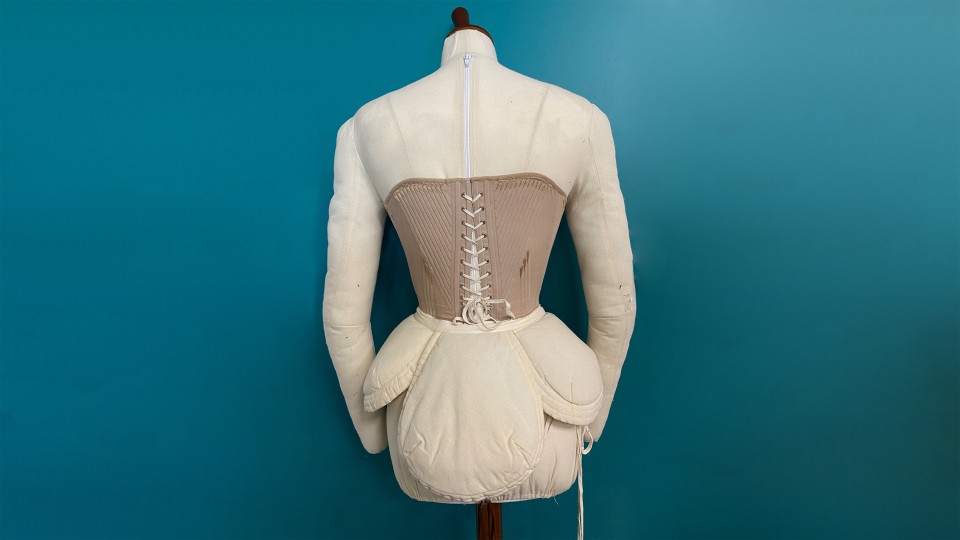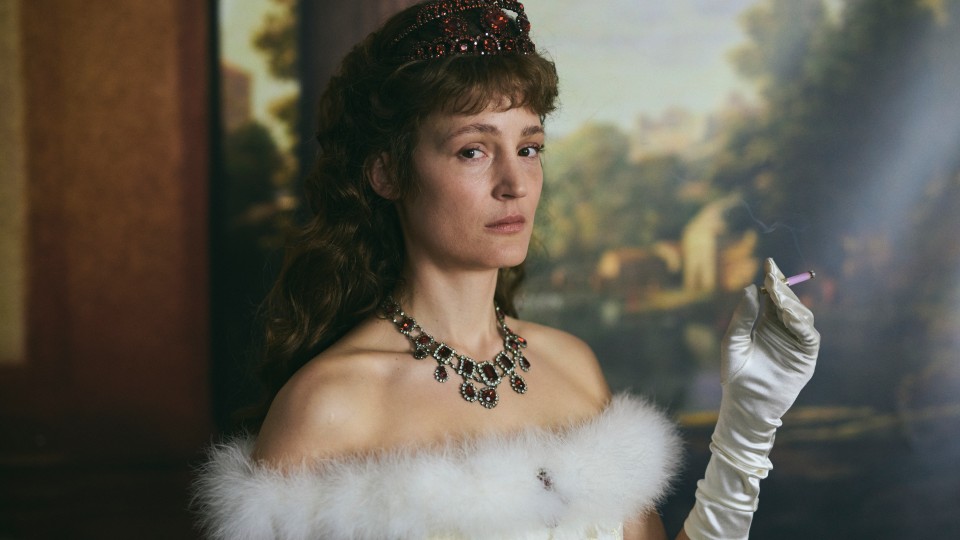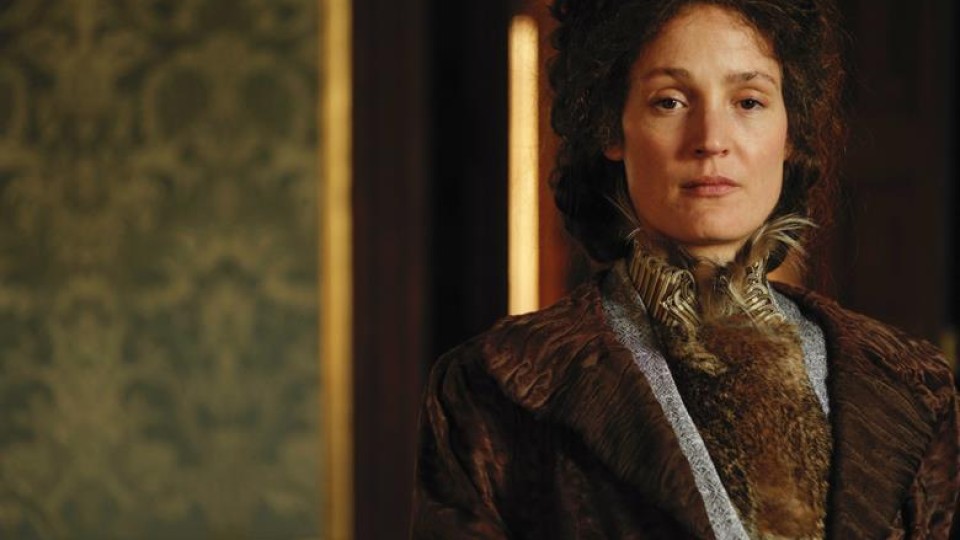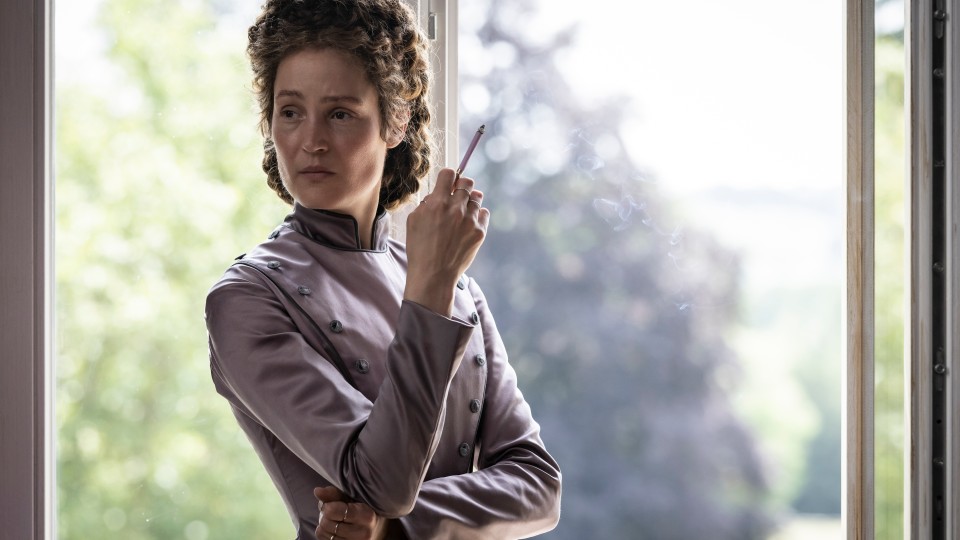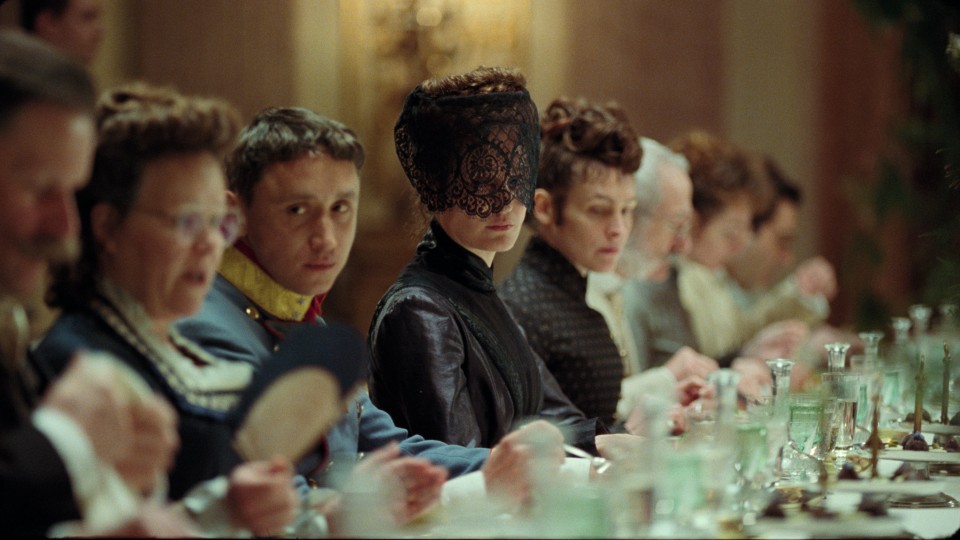The demands placed upon the Costume Department of CORSAGE were twofold in nature. Alongside the task of creating the gowns worn by Elisabeth and her entourage they also faced the perhaps
greater challenge of creating efficient and wearable corsets to go underneath the fine material, to reproduce the astonishing
waist measurements of the Habsburg empress. Interesting insights provided by Costume Designer Monika Buttinger.
The words corsage and corset play crucial roles in Marie Kreutzer’s new film CORSAGE. What are the nuances attached to these
two terms?
MONIKA BUTTINGER: While I was researching I frequently came across quite different usages, so to clarify the situation I consulted Michaela
Lindinger, the costume specialist at Vienna Museum. The word corsage dates back to 14th century France and describes a piece
of clothing that supports the upper body. Corsage and corset are both terms that feature a lot in the history of costumes.
In the context of Marie Kreutzer’s film the garments worn by Empress Elisabeth would be described as corsets, and corsage
is used mainly as an overall term for life in a corset.
Marie Kreutzer’s film focuses on the year 1877/78. Where is that in the history of costumes and fashion?
MONIKA BUTTINGER: The 19th century was a period when lacing up the body enjoyed particular popularity. In Elisabeth’s time this practice would inevitably
deform the woman’s body and lead to considerable damage to the skeleton and internal organs. During the course of my research
I even came across a corset for a one-year-old child. So young upper-class girls were forced to develop narrow waists from
a very early age, with all the damage that this inevitably entailed. The corset was not worn all day long. We know from Elisabeth
that she would perform a morning ritual lasting several hours, and when that was complete, if there was a social occasion
to attend, she would get “into harness”, as she described it, for a few hours. The film is set in a period known in the history
of fashion as the Gilded Age. This term is used to describe a mode of dressing which, in terms of the cut of the fabric, aimed
not to leave a millimetre of space between the garment and the skin. The garments were tailored as if they had been moulded
onto the body, which made manufacturing them extremely time-consuming. Among the experts there are different views about exact
results of Elisabeth’s fashion sense. To put it in our terminology, she was an influencer of the late 19th century. Throughout
the Austrian Empire, and all over Europe, whatever she wore and the way she wore it was noted and studied; in that sense I
would certainly describe her as a trendsetter.
What were the major issues facing the costume department?
MONIKA BUTTINGER: From the very the first reading of the script it was immediately apparent that dealing with the waist would be a huge challenge.
At an early stage of the production we spent a lot of time discussing how far the extremely narrow waist – which is a central
theme of the film in terms of costumes – could be captured by VFX effects. As far as I know, in the end everything was resolved
on an analogue basis. Vicky Krieps’s body – she’s tall (actually she wore heels as well) with relatively broad shoulders and
a narrow waist – provided the best basis for achieving the hourglass figure we were aiming for. But I should add that we laced
up her waist, which is small enough anyway, to make it up to 8 cm smaller. We managed by analogue means to achieve a silhouette
that I would frankly never have thought possible after first reading the script of CORSAGE.
So in terms of costumes you were working on two levels: the invisible components and the visible aspect in the form of the
clothes themselves.
MONIKA BUTTINGER: I’m not a specialist on Elisabeth. I tried to learn as much as possible about the fashion of that epoch so I could then move
away from it and allow myself the artistic freedom to interpret, to apply that knowledge to the screenplay; that’s really
the essential point. One interesting aspect for us in the costume department was Elisabeth’s sporting activities and how that
affected our approach to her waist. The film shows her fencing, performing gymnastics and riding side saddle, among other
things. For the gymnastics we produced what is known as a cording corset, so she could move more easily in all directions.
That meant using fine cord sewn into the corset which emphasises the silhouette and at the same time makes it possible to
bend the torso better. That was our interpretation: we felt that using a normal corset would have made it look completely
unrealistic.
What did the corset actually mean for Vicky Krieps during preparation and shooting?
MONIKA BUTTINGER: We had three main corsets for Vicky Krieps: for riding and fencing we had a rather shorter sports corset, and for the gymnastics
we invented a sort of historical jogging outfit with the cording corset and silk jersey pants. And we had a special corset
used underneath the dresses. Vicky Krieps was given a trial corset during the preparatory period, so she could practice riding
– which she had to work on in any case, wearing a long skirt and sitting side saddle. It was absolute madness. We had a wonderful
young corset specialist from Vienna, Barbara Pesendorfer, who produced all those corset parts and adapted them.
Wearing the corset was very gruelling for Vicky, but it was part of the agreement she made when she took the role. She was
fantastic, open to anything and, I have to say, extremely resilient to physical pain. She always stressed that the pressure
she felt from the corset was also “oppressive” psychologically. I mean, you can’t even laugh properly, and you can hardly
eat. What made it even worse during the shoot was that she often had to wear it for several hours at a time. Naturally whenever
possible we would open it a little between takes. We tried to design the clothes to be as appropriate for filming as possible,
but lacing them up and the final process of getting them ready for shooting was very time-consuming. It involved lacing up
the corset completely, putting a top on over that, closing it, fixing it and in some cases also fastening the skirt to the
top.
How did you resolve the visible costume level – the dresses?
MONIKA BUTTINGER: It’s quite possible that the white dress she wears in the film when she is being painted never actually existed. In the film
this features during the phase when Elisabeth decided there were already enough paintings of her which could be used as “models”
for future portraits. In all likelihood that dress is the product of a painter’s imagination. Marie and I decided that for
a change, that dress could be more playful and pretty. We designed all the other costumes to be very straightforward and clear,
rejecting opulent ruffles, patterns and decorations in favour of very beautiful, special materials to create the desired effect.
The decorative elements struck us as too much, even if they were in line with historical truth. Apart from the red dress we
also agreed that there shouldn’t be any bright, powerful colours for her clothes. If we had created the dresses in accordance
with what is known from the historical reality, they would have been much more lavish.
I brought a number of local and very innovative firms on board, and I was very happy with the way we worked together. For
the hats I was able to create a sort of mini-collection in association with the Mühlbauer company, and all the striking bags
in the film were developed with the young bag label Sagan. We produced some of the dresses from the fantastic linen material
provided by Leitner Leinen, and the knitwear label Rudolf developed and implemented the knitting designs. It takes about 120
working hours to produce one dress. To simplify the process, I developed for Elisabeth a variety of building block elements
or systems, because we needed approximately 45 different outfits. For the dresses she wore at the Hofburg there were small
changes made – perhaps a dress would be gathered, there would be a different overskirt or a simple cravat-style trimming –
and this enabled us to create a large number of “looks” from 10 set pieces. For the journey to England there was a reversible
cape which, in combination with the collar, could produce four variations. The costume design of CORSAGE entailed a huge amount
of conceptual and creative work, but as a costume designer you could hardly wish for a more exciting task.
Interview: Karin Schiefer
May 2022
Translation: Charles Osborne

